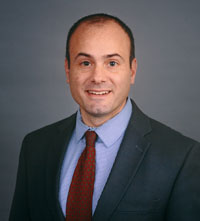
![]()
Whether documents or communications are subject to the attorney-client privilege (and thus not subject to disclosure) is a frequently litigated issue. Given the various factual scenarios that can affect what is or isn’t protected, such matters often require judicial interpretation.
Generally speaking, once someone shares a privileged communication with a third party, the privilege is waived and the communication becomes fair game. However, as with most general rules, there are exceptions. One of the most frequent exceptions is the so-called “common interest doctrine.” The basic premise is that a third party may be privy to an attorney-client privileged communication without losing the privilege if the communication is made for the purpose of furthering a nearly identical legal interest shared by the client and the third party. Hyatt v. State of Cal. Franchise Tax Bd., 105 A.D.3d 186, 205 (2d Dep’t 2013). Courts have interpreted the “furthering a nearly identical legal interest” portion to require that the communication be made in pending litigation or in reasonable anticipation of litigation where the client and third party have a common legal interest. Id., Aetna Cas. and Sur. Co. v. Certain Underwriters at Lloyd’s London, 176 Misc.2d 605 (N.Y. Sup. 1998), aff’d, 263 A.D.2d 367 (1st Dep’t 1999).
In June, the New York Court of Appeals, in Ambac Assur. Corp. v Countrywide Home Loans, Inc., 27 N.Y.3d 616 (N.Y. 2016), overturned a decision of the Appellate Division, First Department and ruled that the threat of litigation is a necessary element of the “furthering a nearly identical legal interest” portion of the common interest doctrine. The Court refused to expand the doctrine to privileged documents shared between companies during a pending merger. Back in 2013, the New York County Supreme Court refused to expand the common interest doctrine. Subsequent to that decision, Bank of America/Countrywide appealed to the Appellate Division, which reversed the trial court and found that the documents exchanged during the course of a merger between Bank of America and Countrywide were, in fact, protected. The First Department found at the time that business entities often have important legal interests to protect even without a potential lawsuit.
Specifically, Ambac challenged Bank of America’s withholding of approximately 400 communications between Bank of America and Countrywide after the signing of the merger plan in January 2008 but before the merger closed that July. Bank of America identified the communications in a privilege log and claimed they were protected from disclosure by the attorney-client privilege because they pertained to a number of legal issues the companies needed to resolve jointly in anticipation of the merger, such as filing disclosures, securing regulatory approvals, reviewing contractual obligations to third parties, maintaining employee benefit plans, and obtaining legal advice on state and federal tax consequences. The parties were represented by separate counsel but the merger agreement directed them to share privileged information related to these pre-closing issues and purported to protect the information from outside disclosure. Bank of America argued that the merger agreement evidenced the parties’ shared legal interest and the fact that the parties sought to maintain confidentiality, thus protecting the relevant communications from discovery.
Ambac, however, argued that the voluntary sharing of confidential material before the merger waived any privilege because Bank of America and Countrywide were not affiliated entities at the time of disclosure and did not share a common legal interest in actual or anticipated litigation.
The Court of Appeals, in refusing to expand the common interest doctrine, held: “We do not perceive a need to extend the common interest doctrine to communications made in the absence of pending or anticipated litigation, and any benefits that may attend such an expansion of the doctrine are outweighed by the substantial loss of relevant evidence, as well as the potential for abuse.”
The Court noted that while mandatory disclosure would inhibit the exchange of privileged information between parties who share a common legal interest in pending or reasonably expected litigation, “the same cannot be said of clients who share a common legal interest in a commercial transaction or other common problem but do not reasonably anticipate litigation.”
The Court added, “Put simply, when businesses share a common interest in closing a complex transaction, their shared interest in the transaction’s completion is already an adequate incentive for exchanging information necessary to achieve that end…Defendants have not presented any evidence to suggest that a corporate crisis existed in New York over the last twenty years when our courts restricted the common interest doctrine to pending or anticipated litigation, and we doubt that one will occur as a result of our decision today.”
This decision provides important clarification not only for litigants. Businesses need to have a clear understanding of when they could be waiving the attorney-client privilege and when they could be required to turn over privileged communications. The Court of Appeals has now confirmed that if there is no pending or reasonably anticipated litigation and you share communications that otherwise would be protected by the attorney-client privilege with a third party who you think shares a common legal interest, you will be waiving the privilege.
Jeffrey Basso, a senior attorney at Campolo, Middleton & McCormick, LLP, represents business owners, corporations, corporate officers, shareholders, and investors in a variety of litigation matters in state and federal court involving business and contractual disputes. An aggressive litigator, Jeff has vast experience prosecuting and defending matters on behalf of clients in actions involving employment contracts, non-compete agreements, trade secrets, fiduciary duty, breach of contract, hour and wage disputes, real estate transactions, investments, and construction matters.




